Series Retrospective: Capture the memories of the ever-evolving world of Pokemon starting with Red and Blue and ending with a special look at the upcoming Diamond and Pearl versions.
Ruby & Sapphire sparkle in the third generation
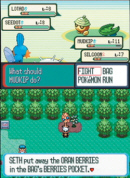
Pikachu went on another vacation in 2002 because there was no Pokemon games released that year. During that time, the Pokemon franchise must have also gone to a Pokemon Center to restore itself because it came back with full health with the release of Pokemon Ruby and Sapphire on March 17, 2003. The Game Boy Advance game starts players out fresh in the third generation by moving to a new town with a new professor and over 135 brand new Pokemon to catch. Advanced graphics and two-on-two battles also built on the presentation and the gameplay of the original. However, with these improvements came compatibility setbacks as the Advanced generation wasn't compatible with the previous Red and Blue or Gold and Silver versions.
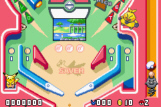
The release of a new generation meant that there was a need for new spin-offs, so Nintendo was quick to fire up the old pinball machine and tilt to toward the Ruby and Sapphire versions in August 2003. Working just like its Game Boy Color predecessor, Pokemon Pinball: Ruby & Sapphire featured more monsters, a bigger Pokedex and better graphics for easier Poke Ball play. All of these improvements made the game take after the name of the handheld system: Advanced.
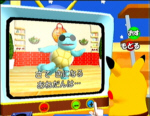
Before turning to a new year, fans could tune into Pokemon Channel for GameCube, the first Pokemon game for the two-year-old console. However, tuning into this initial 128-bit release for the franchise was just about all players could really do. Like Hey You, Pikachu, the УgameФ was geared toward the youngest of gamers and mostly consisted of watching Pokemon cartoons and answering game show questions.
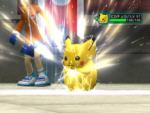
Nintendo would make up for the non-interactive, non-appealing Pokemon Channel by releasing Pokemon Colosseum to GameCube-owning Pokemon fans. After a two-year hiatus from the battling console arena, the sequel to the two Pokemon Stadium titles returned in March 2004. With it came better graphics, more than 200 Pokemon and an RPG mode. The RPG mode took the place of the mini-games and tower battles, but it wasn't a full-fledged Game Boy-type adventure. Instead, players were charged with the task of rescuing Shadow Pokemon from bad trainers. Really, its significance lied in transferring 2D Ruby and Sapphire Pokemon to 3D and then doing the same for the original monsters in that year with Pokemon FireRed and LeafGreen.
Transferring Pokemon between Colosseum and the Advance generation required the use of the Nintendo GameCube-Game Boy Advance Cable since the Transfer Pak was only compatible with the previous Game Boy systems and N64. But unlike Stadium, Colosseum did not ship with its necessary connectivity included. What did come with the game, or for those who pre-ordered it at least, was a bonus GameCube disc. In the U.S., it contained the rare Jirachi, previously obtainable only at a Nintendo event or through a cheat device like GameShark or Action Replay. Celebi also saw the same promotional treatment in Japan, but can similarly be collected using cheats.
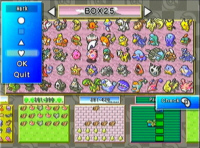
Pokemon Box: Ruby & Sapphire was another limited GameCube release that fell into the non-game category. Released in the summer of 2004, it came packaged with a GameCube memory card in order to transfer Advanced generation collections to the card for safe keeping and organization. In addition to providing spread out, easy-to-read data, Pokemon Box doubled as an emulator in which Ruby and Sapphire could be played on the big screen. Although it wasn't much of a game, it was an extremely useful tool. Unfortunately, like the Colosseum pre-order disc, it was a limited release. The best way to obtain either discounted disc is to go to eBay, really. Just make sure to bid on an NTSC version for U.S. televisions or a PAL version for European teles.

The summer wave of non-game Pokemon titles didn't stop there as Majesco also put out GBA Video cartridges. Along with a variety of other cartoons, the Pokemon anime received highly compressed video treatment. Multiple cartridge editions released with two episodes paired on one cartridge at a time. It wasn't the most efficient way to watch the show, but it effectively sold to a GBA/Pokemon fanbase in 2004.
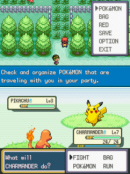
Three non-game releases in a row called for a full-scale adventure game and that's just what Pokemon players got from Pokemon FireRed and LeafGreen in September. These two games were remakes of the original Pokemon RPGs packed with Advanced generation graphics for the handheld and improved gameplay from newer versions. A new level of gameplay was also added after completing the original quest's finale. The most innovative feature, however, was the GBA Wireless Adapter that shipped inside the game box for cable-free connectivity. The adapter made for a pretty large attachment on top of the system, especially on the more compact GBA SP, but it made trading and battling more fun and has been used for other games, too.
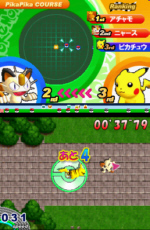
Nintendo DS released in November 2004, two months after FireRed and LeafGreen. So, Pokemon Dash was the first from franchise to utilize the touch-screen technology of this dual-screen handheld in March 2005. Like the first Pokemon GameCube release starring Pikachu, this spin-off starring the lead Pokemon pales in comparison to other non-adventure titles. Players would move the system's stylus quickly to race a Pikachu and push it in the correct direction to turn. The problem was that the gameplay wasn't too much fun. On top of that, the bottom screen contained the top-down track view and the top screen mapped out hazards, making neither spectacular to look at. Only being able to race as a Pikachu didn't help matters.
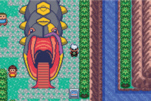
Nintendo didn't forget about its third wheel to the Ruby and Sapphire releases when it released Pokemon Emerald for Game Boy Advance in April 2005. Completing the quest opened up battle locations that were lumped together as Battle Frontier. It was sort of like Battle Tower, only this time Tower was only one of seven expanded challenge areas. Other than that, this version made it possible to use the GBA Wireless Adapter from FireRed and LeafGreen.
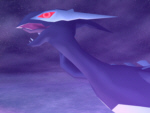
Pokemon XD: Gale of Darkness released for GameCube in October 2005, and while it didn't come out in the month of March, it was a Stadium-style console game. In fact, XD was almost exactly like the previous GameCube title featuring Shadow Pokemon, Pokemon Colosseum. To its credit, this expanded sequel boasted nearly double the Pokemon and put forth some new mini-games. It just wasn't the true RPG like the Game Boy adventures, which Nintendo was originally hyping it to be.
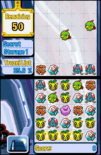
In March 2006, Nintendo DS saw Pokemon's second spin-off attempt with Pokemon Trozei after Pokemon Dash failed to get a running start a year earlier. This time, the company went with a more tried-and-true approach by bringing a Tetris-style game to the dual-screen system. It is more appropriately named Pokemon Link! in Europe because its gameplay is all about linking four or more creatures together in a block by moving them around and matching them up. Like most Pokemon games, there was a Pokedex and entries here were completed upon linking up a new Pokemon.
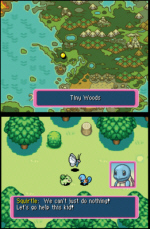
Pokemon Mystery Dungeon, the next release in September 2006, represented a rare move for Nintendo because the pair of portable RPGs came out of different systems. The aged Game Boy Advance got a proper Pokemon send-off with Red Rescue Team, while Nintendo DS received a stepped-up version called Blue Rescue Team. Stranger yet was the fact that players took on Pokemon form in these games. Because of this, their objective became finding a way to turn back into a human while restoring the peace of the Pokemon world. Its mission-based gameplay was also very different as randomly generated dungeons mimicked other Mystery Dungeon games developed by Chunsoft. At the same time, this made it a non-traditional Pokemon release.

A conventional Pokemon adventure debuted on DS in Japan during the same month that Pokemon Mystery Dungeon released in North America. Alas, Poke freaks from other regions still await the proper Game Freak entry, Pokemon Diamond and Pearl, launching April 22, 2007. In the meantime, U.S. and Canadian gamers can be tide over with the October 2006 release, Pokemon Ranger. As the title suggests, players are cast as a Pokemon ranger rather than a Pokemon trainer. Lunick and Solana, the two ranger characters to choose from, are older and carry around a capture styler. This new device is quite different from a PokeBall in that players must use the stylus to draw circles around a wild Pokemon in order to capture it. From there, it's possible to use the special abilities of more than 200 creatures to complete the adventure.
The Future: The Fourth Generation
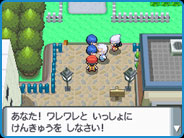
The upcoming Pokemon Diamond and Pearl versions for DS put the Poke Ball back into a trainer's hands as players explore the region of Sinnoh. While the concept of this fourth generation adventure remains similar at its core to the other canon RPGs, Diamond and Pearl represent the biggest jump in the series to date. Colors are at a new max thanks to the increased palette of Nintendo DS and the superior hardware has made it possible to include a snowy environment for the first time. Another first is the ability to battle online with eight friends or exchange Pokemon online at the Global Trading Station. Best of all, trades via Nintendo's Wi-Fi Connection are so streamlined that online exchanges can take place even when you're offline.
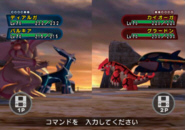
While the exciting DS adventure commences April 22, 2007, the battling and trading continues on Wii in June with the release of Pokemon Battle Revolution. Like the stadium games before it, Battle Revolution will allow players to import Diamond and Pearl caught Pokemon to the console, battle others online in 3D and emulate the top-down 2D adventure on the big screen.
Battle Revolution is the final known, unreleased Pokemon game. However, Nintendo's pattern indicates that there will be a Diamond and Pearl-themed pinball title, maybe another puzzle adaptation with the new creatures and an enhanced third version of the DS adventure along the lines of Pokemon Jade. So far, there are a total of 483 of these Pocket Monsters inhabiting Satoshi Tajiri's Pokemon universe if you include the latest Diamond and Pearl creatures. That number and the trend of this ten-year-old, slowly evolving, highly addictive series doesn't have to end with this generation, even if Nintendo can't think of any more precious gemstones to names its games after.
Be sure to check out our import impressions of
Pokemon Diamond and Pokemon Pearl.